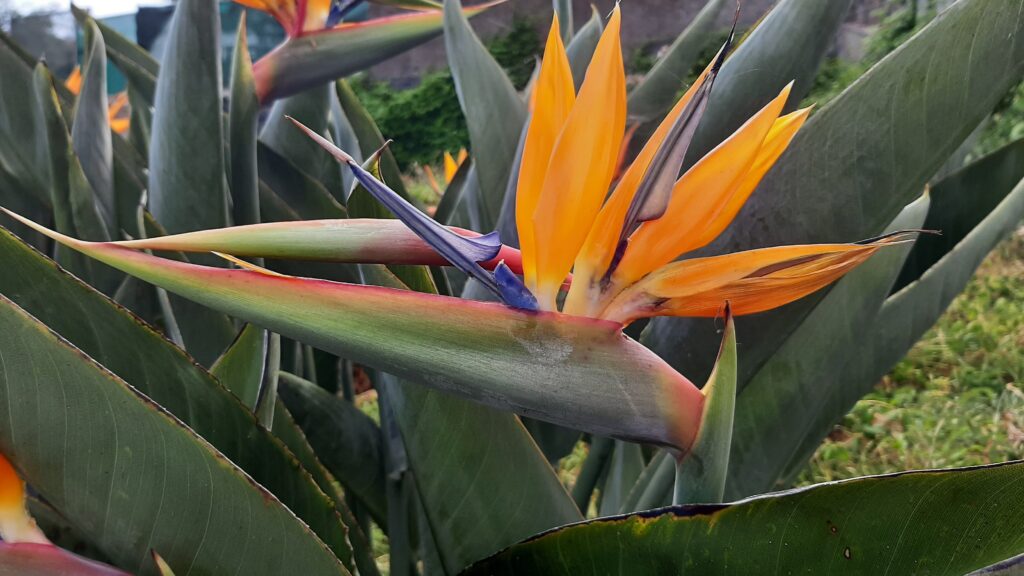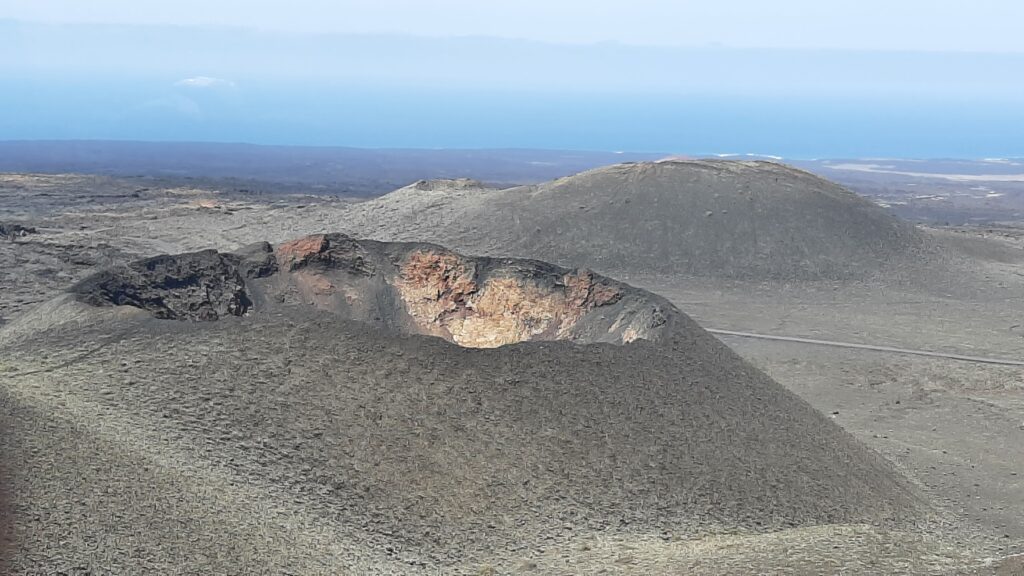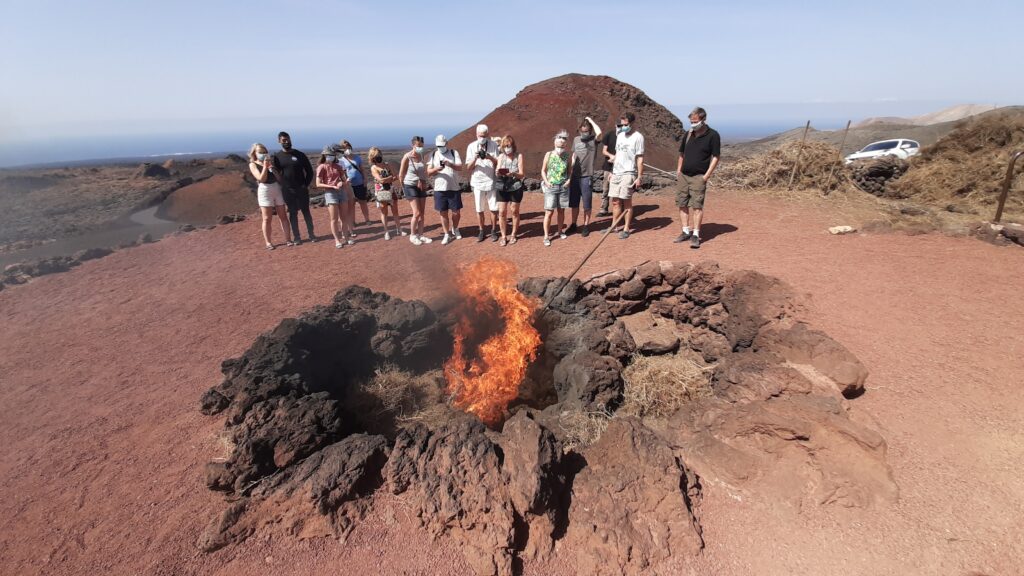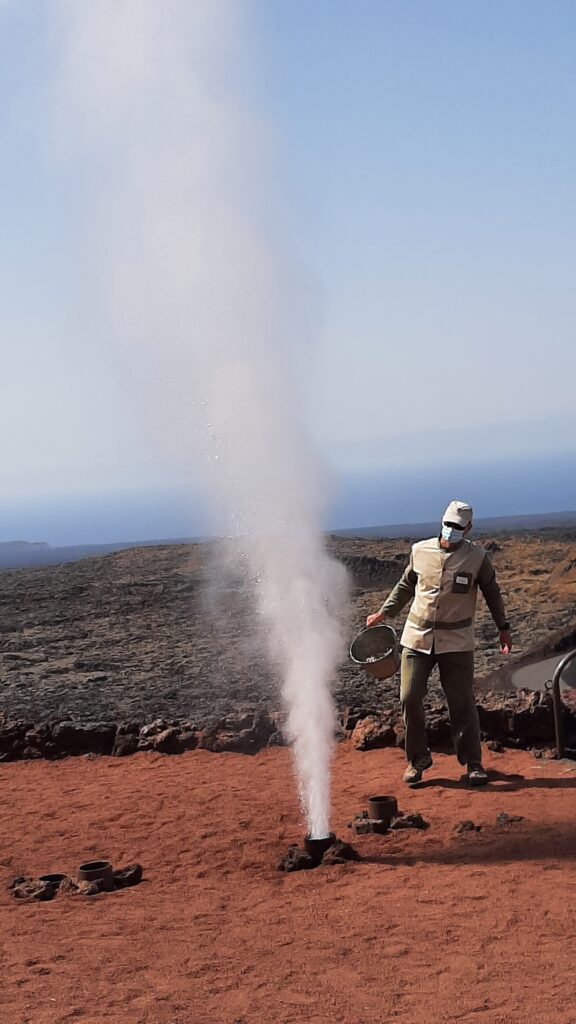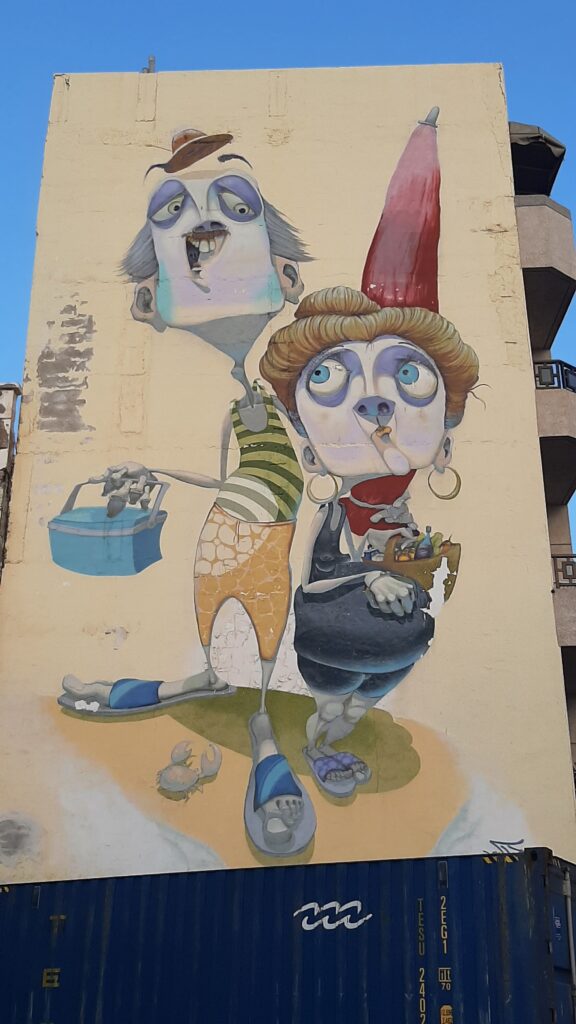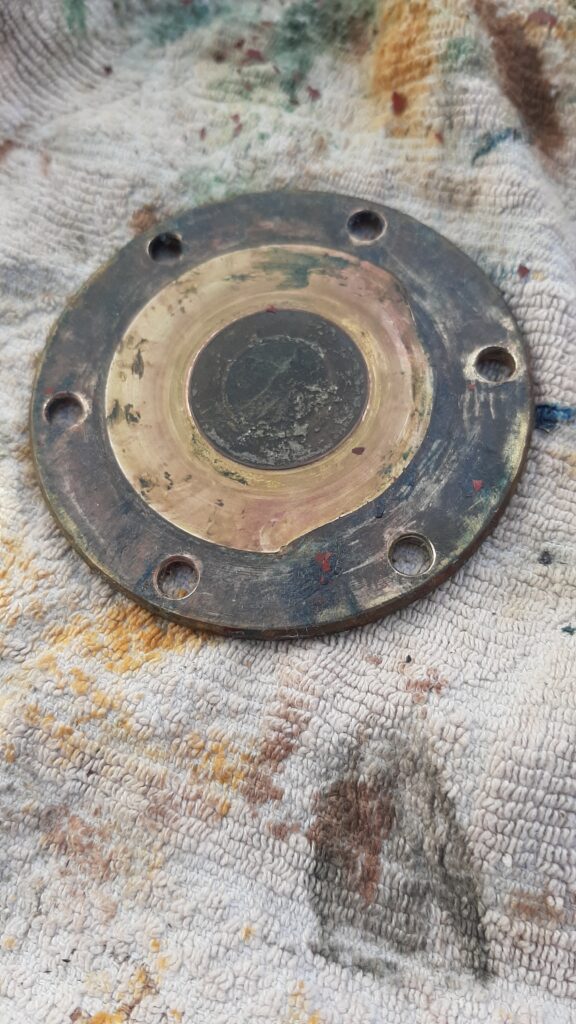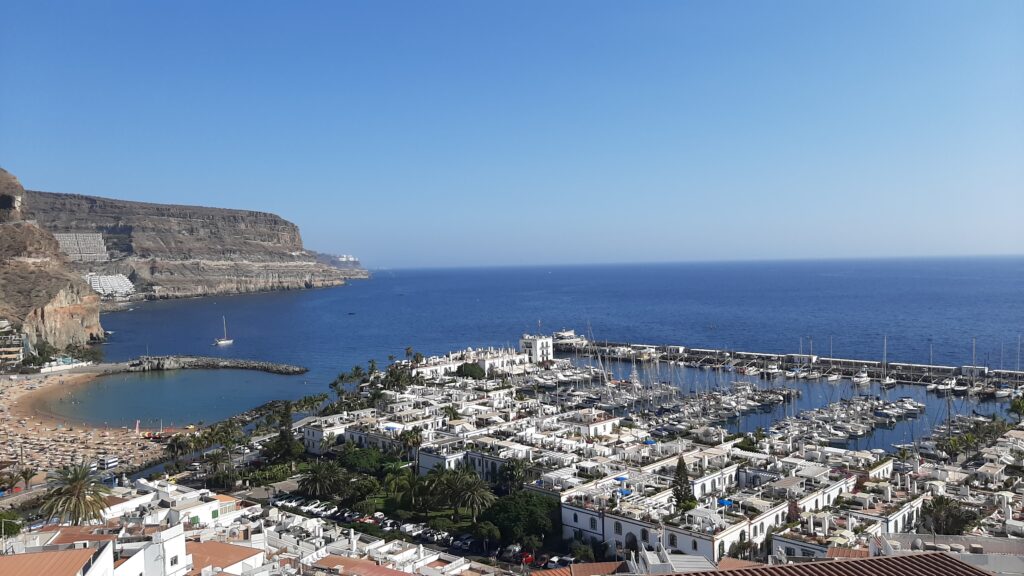The crossing from Madeira to the Canary Islands started well: we were waved goodbye by two pilot whales who showed themselves quite close to us (no images, sorry, just like the sea turtle later in the trip), and we had a nice backstay wind (coming in diagonally from behind). We sailed past the Ilhas Desertas (islets near Madeira) heading to the north of Lanzarote. The distance from Madeira to Lanzarote is about 300 miles. Shorter than the previous crossing so should be doable in three days (and two nights). The forecast was good: about 15 knots all the way (wind force 4) and we should arrive at Lanzarote in time before the forecasts picked up a bit more wind (force 5, so no problem yet). But yes, predictions…., those once again showed to have a limited value.
You would expect that wind on the ocean would be fairly constant, especially if it is called “trade wind”. But the only constant seems to be that it is not constant. So, many changes and therefore also many sail adjustments and it is more difficult to keep a course with the windvane steering. Sleeping is therefore also more difficult as there is always something that has to be done. And when the wind picks up, sleeping is a bit problematic anyway: the sea becomes rough and then it becomes a bit like being in a roller coaster cart. Only a normal roller coaster is over after a few minutes and you can get off again (or continue sleeping). That is not possible on the boat and you are tossed back and forth for hours on end.
When you are inside the boat you can also notice very well whether the conditions are changing: the boat will behave differently due to the waves and the sound of the wind generator increases. It starts howling and screaming above 15-20 knots. Good for the amps, but less for peace of mind. For those who were wondering: The wind generator is to generate electrical power for our batteries so that we can continue to use our lights and equipment. Most of it has to be generated by our solar panels, but it’s not always sunny (and certainly not at night 😉) so all other little bits are also welcome, such as from the wind generator.
As we approach Lanzarote on the last morning, the wind picks up again. We sail with a wind force 5 to 6 with half wind between some islands above Lanzarote, that give a little more shelter, but when we then turn south we thunder with force 6 to 7 downwind, surfing from the waves, towards the port of Puerto Calero. This is partly caused by the so-called “acceleration zones” that are located around the Canary Islands. Because the wind has to force itself around or over the islands, it can vary locally considerably in force. Finally, we arrive in Puerto Calero at 17:30 and we can sleep and recover from this crossing. Over 300 miles in 55 hours, an average of 5.6 knots. Not bad for us given the varying circumstances.
The crossing to Fuerteventura a week later was a breeze: 8.5 miles and virtually no wind 😉. We anchored at Isla de Lobos, a small island just above Fuerteventura. We did some swimming and snorkelling, and in the evening we ate from the ready-made BBQ that we had finally been able to get on Lanzarote. We anchored close to the island to minimize the impact of the swell. The bottom so close to the island was not sandy, so the anchor couldn’t dig in. At night we therefore hooked up to a mooring that was used during the day by “party catamarans” that come to the island with day trippers.
The crossing from Fuerteventura to Gran Canaria was another fine example of varying conditions and acceleration zones. We sailed from Gran Tarajal to Puerto de Mogán, a distance of 100 miles so too much to do in one day in daylight. We therefore left at 14:00 so that after sailing through the night we would arrive the next morning. We started with a nice reaching course with 15-20 knots. But after two hours there was a bend in the course where the island makes a nod and bang-boom, the wind was completely gone. So we had to add the engine. We continued to need it until we had rounded the bottom of Lanzarote and the wind had more “free track” along the island again. Of course, that happened exactly when I had just layed down to try to get some sleep. So presto, get out of bed to set the sails. Fortunately, we could now turn off the engine. Now it was No’s turn to sleep.
A little later there was yet another shipping lane (traffic separation system) that we had to cross. Without significant course or speed changes we were able to pass between the big ships. Meanwhile, the wind started to pick up again and by the time we approached Gran Canaria we were again in 25-30 knots. Pfff, apparently it can’t go smoothly for once. On the second reef and the small jib we rounded the southern tip of Gran Canaria and, you guessed it, within a few minutes the wind was completely gone so the last 10 miles had to be done by engine. That gave me the opportunity to get another two hours of sleep after the tiring night.
It may be a bit monotonous, those stories about strong winds and rough conditions. Perhaps in the future I should only mention when we have the ideal conditions. That sounds less whiny and of course gives a nicer picture of our trip. By the way, we are of course becoming more and more experienced in this way and are also less scared when things go wild again. We dare to set a little more sail and are (afterwards of course) also happy with the extra miles covered.
These are of course actually luxury problems (the entire journey is luxury so every problem is by definition a luxury problem). Just like the other problems we have had, such as the broken cooling water pump. Someone asked whether we were not faced with relatively many technical problems. And I hadn’t even mentioned that the raw cooling water pump and the drinking water pump have also caused problems 😉. But these are also luxury problems and relatively easy to solve. When I hear what problems occur with other (Dutch) boats that are also on a similar trip: broken forestay putting (attachment of the stay to the boat), torn anchor fittings, crack in the hull due to incorrect use of a crane in the harbor, broken gearbox, jammed (brand new) furling reefing installation, etc, etc. Then I consider ourselves lucky with our little problems.
For those interested: The problem with the raw cooling water pump turned out to be the result of preventive maintenance. I had installed a new impeller (you have to replace it every once in a while to avoid problems). But after replacement, no more water came out. Probably the size of the impeller was slightly different from the old one. And in combination with a slightly worn cover of the pump, it had been able to suck in too much false air to be self-priming. I then turned the cover of the pump inside out (after cleaning up the outside a bit) so that the worn part was on the outside and there is again a nice smooth and flat surface on the inside. Voila, problem solved.
The problem with the drinking water pump turned out to be a bit more unclear. When we got back on board after our stay in Blanes (near Barcelona), the pump wouldn’t run anymore and only got warm. After I had disassembled the pump and turned it by hand, it worked again (up until today, knock on wood). By the way, I had bought a spare pump on Marktplaats before departure, but it turned out to be at home so forgot to bring it. We were able to buy a spare pump in Portugal in case it really stops working.
At the moment we are in Puerto Pasito Blanco on Gran Canaria. We visited an acquaintance of ours in Puerto de Mogán and then sailed here. We actually wanted to go to La Gomera via Tenerife, but the marinas on both islands are currently full. We notice that it is quite busy around us anyway. The ARC is coming up (that organized transatlantic trip for sailboats) in which 300 boats are participating and we also suspect that this “post-Corona” year brings some extra boats that are now doing what they couldn’t do last year. We are now on the waiting list in the hope of getting a place to visit those two islands. But if that doesn’t work out on a short term, we will have to drop that plan. At the beginning of November, we want to start the crossing to the Cape Verde Islands. A crossing of almost 800 miles, so the longest yet and that requires some preparation.

